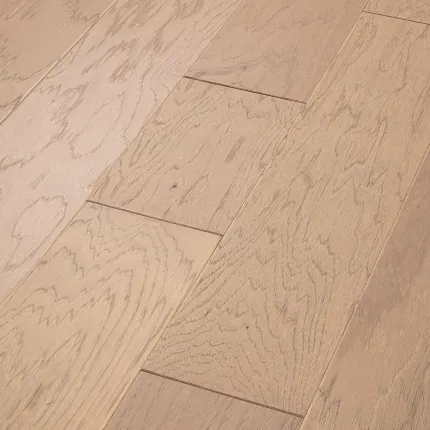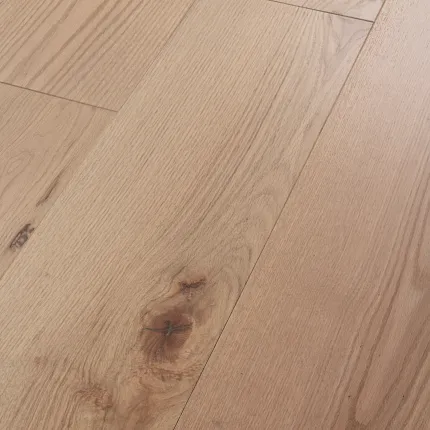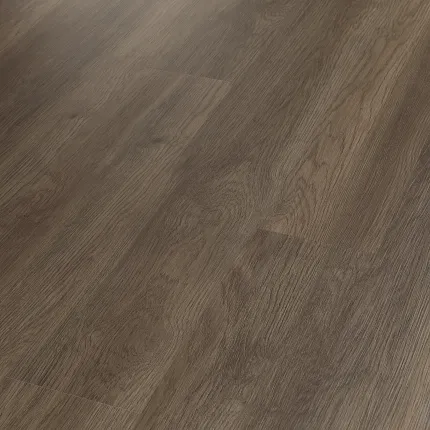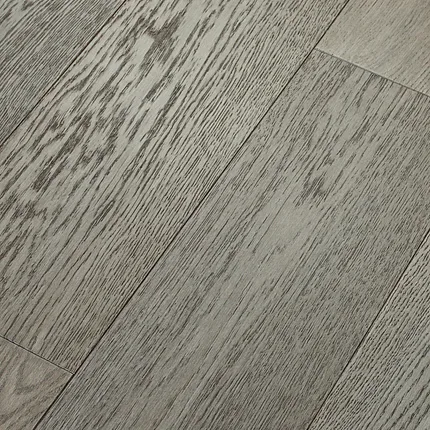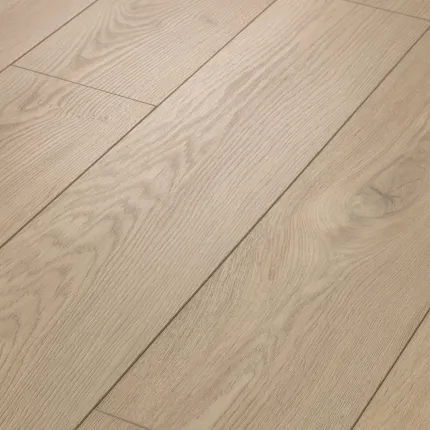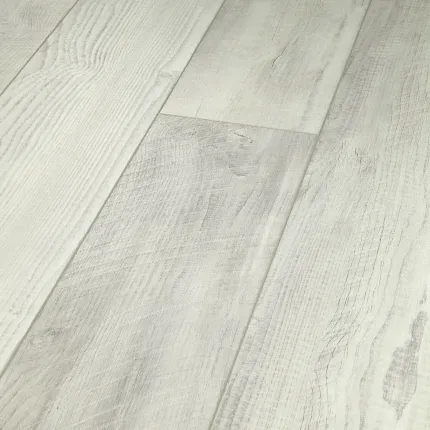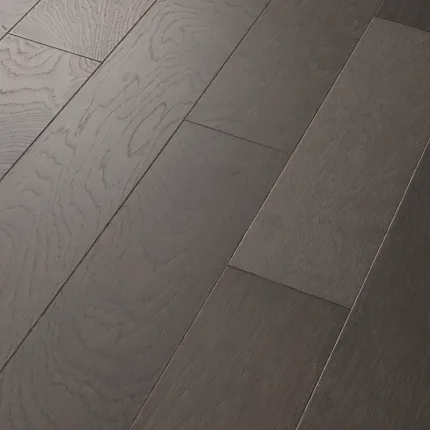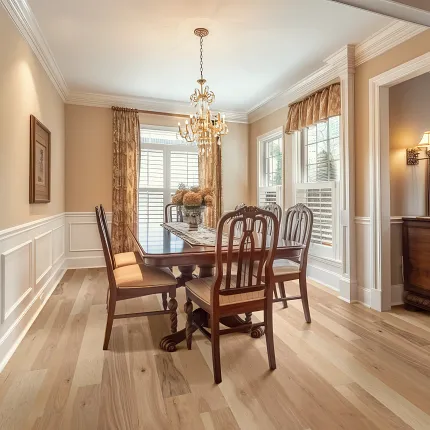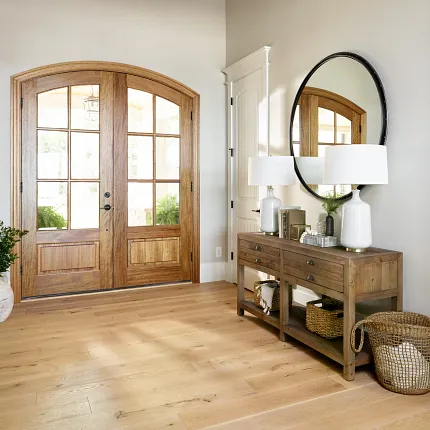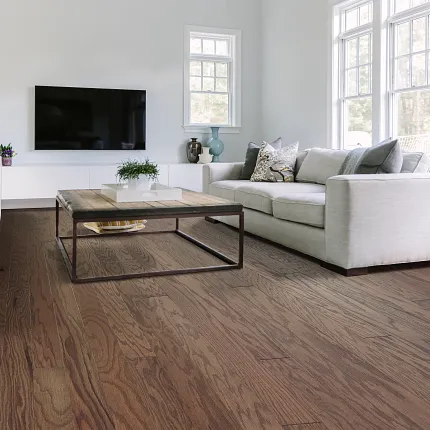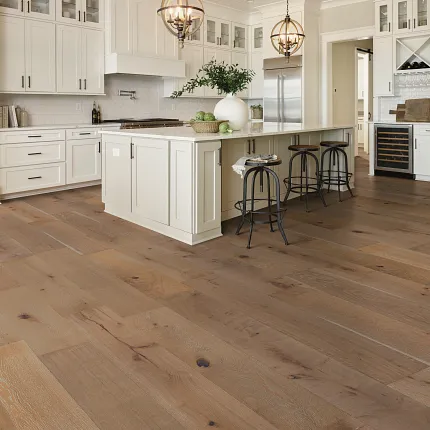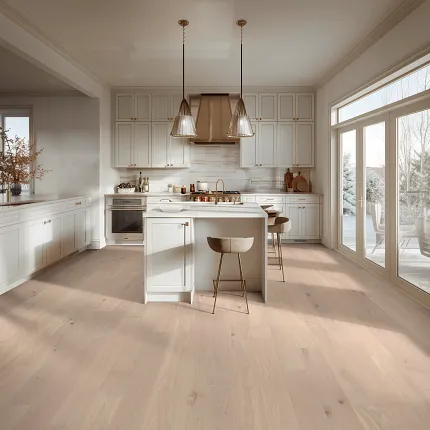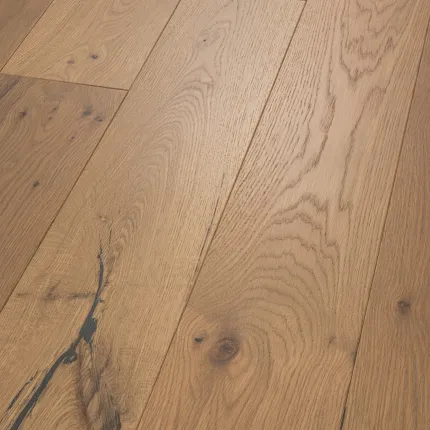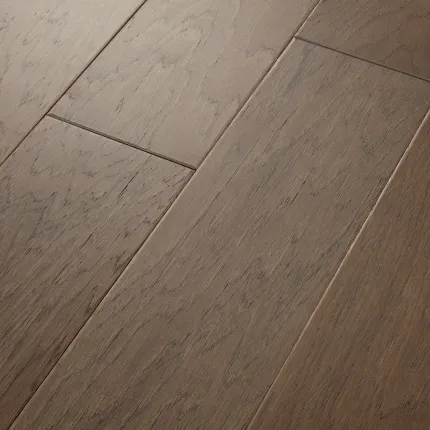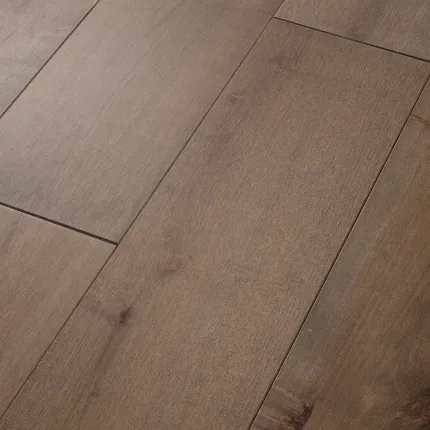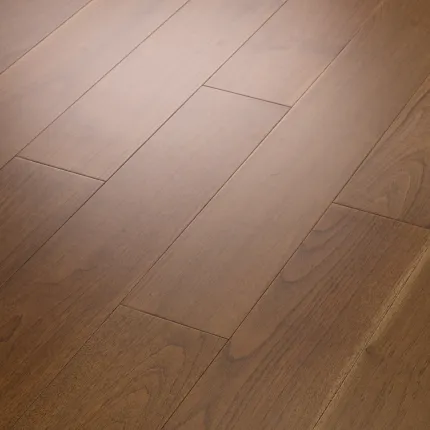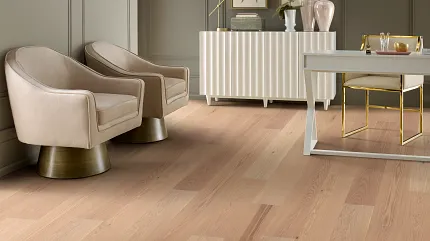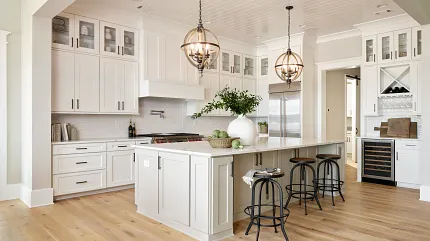HARDWOOD OVERVIEW
Shop by Color
Customer Favorites
Shop by Species
Shop by Texture

Repels water.
Relieves worries.
The Repel collection features water-resistant hardwood designed to withstand the spills and messes of everyday life.
Shop Collections
FREQUENTLY ASKED QUESTIONS
Solid hardwood is made from a single piece of natural wood, offering durability and the ability to be refinished multiple times. However, it is more susceptible to warping or gapping due to moisture and temperature fluctuations. Engineered hardwood consists of a veneer of real wood over a plywood or fiberboard core, providing greater stability against moisture and temperature changes.
Yes, hardwood floors are seen as a premium feature and typically increase a home’s resale value. They are highly desirable for their durability, timeless appeal, and low maintenance, often attracting buyers and boosting marketability.
Find product care information for your hardwood by clicking on the link below in our Resources section. If you have specific questions not answered in our care guides, you can chat with one of our friendly technical specialists using the chat icon below.
No. Steam cleaning can damage and warp hardwood or laminate flooring. Visit our Care and Maintenance page to locate the care guide for your hardwood floor.


